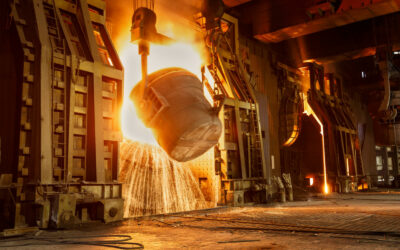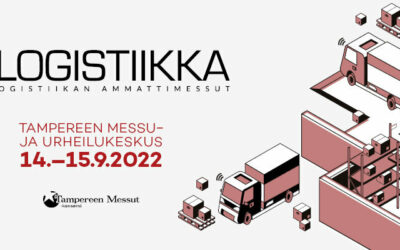Fleet management means optimising the life cycle of an organization’s movable assets. Movable assets include vehicles, machinery, and equipment that are used in day-to-day operations.
Fleet management enables the company to keep track of:
- what equipment they have
- when it was acquired
- when it was last maintained
Tracking the location of equipment and monitoring its utilization rate is a key part of effective fleet management. Location tracking makes it possible to monitor how much equipment is used, and adjust the volume and location of equipment based on actual need.

Example of fleet management: monitoring postal delivery trolleys
“Last mile” deliveries in urban centres require specialized light cargo vehicles. Driving from building to building by car isn’t possible in tightly built areas, and walking isn’t a good option either because postal workers can’t carry very much mail when traveling by foot. The Finnish Postal Service uses electronic maxi delivery trolleys in such areas.
The electric delivery trolleys are specialized equipment that must always be where it’s needed, when it’s needed, for the mail to be delivered. To track the Maxi delivery trolleys, the Finnish Postal Service uses the Kaltiot Smart Tracker system. Read more!
Why is fleet management important?
Fleet management is important because it reduces manual workload, reduces equipment loss, lowers maintenance costs and extends the life cycle of equipment.
Less time spent searching for equipment
For the employees who use them, it’s important that equipment or tools are well maintained and easy to find.
Anyone who works on their own car knows it’s best to keep your tools organized. Otherwise, you’ll end up spend half an hour digging through cabinets every time you try remove a screw, because that one screwdriver you need is lost.
For an employer, lost equipment means your employees are spending time on the clock searching for the tools and machines they need rather than being productive.
Do inventory faster
When you know where all your equipment is at all times, there’s less need for “doing inventory” and other manual checks. For example if data is needed for an investment decision, you can simply pull it from the existing database and run any calculations needed.
Less equipment loss
Companies with a lot of movable equipment Often end up buying more when the existing equipment simply disappears. it’s like a sock that goes missing when you’re doing laundry. Nobody knows where it went, but the only solution is just to buy more socks. Trolleys can be accidentally left in a customer’s warehouse, bikes get stolen or a cart ends up for sale in Kenya – anything is possible.
However if the trolleys are being tracked, it’s much less likely that they’ll be left in the wrong place. Lost trolleys can be returned to the warehouse, so the company does not have to buy more equipment so often.

Reducing equipment loss by tracking bicycles
The Student Housing Foundation of Northern Finland, PSOAS, offers rental housing for students in Oulu. PSOAS wanted to provide bicycles for shared use, particularly for exchange students.
To keep the bikes safe and in good condition, tracking devices were installed on each bike.
At the very start of the project PSOAS realized they had far fewer bikes than they thought. They had detected equipment loss, and they hoped that with the help of tracking, future losses will be reduced.
Extended equipment life cycle
An ounce of prevention is worth a pound of cure; with better record-keeping and better maintenance, your equipment is likely to last longer. Fleet management also includes performing and recording recommended maintenance.
Reduced maintenance costs
Good fleet management also reduces the cost of equipment maintenance. Having a record of the equipment with its age and usage allows you to anticipate maintenance needs. The usage rate can be monitored using a tracking device and you can also set an automatic maintenance notification after the equipment has been used a certain number of hours or traveled a certain distance.

Reducing maintenance costs by tracking personnel lifts
Kaltiot Smart Tracker was used to track the location of personnel lifts in REDI, one of the largest construction projects in Finland at the time. Monitoring helped improve the efficiency of maintenance by showing workers the location of the exact machine that needed to be serviced.
Easier to get equipment insurance
The insurance value of equipment is easier to determine when you know exactly what equipment you have as well as its age. Being able to predict the life cycle of each piece of equipment also makes obtaining insurance easier.
A more environmentally friendly fleet
Better fleet maintenance avoids wastage and helps you get the most out of the equipment you buy. Less equipment loss also means less wasted resources. Fleet management makes your business more resource-wise and environmentally responsible.
How much can you save with good fleet management?
We have estimated that just by tracking the location of hospital beds, a medium-sized hospital could save €200 000 a year and reduce the number of beds by 10%.
The first step for a company that is getting started with fleet management is to know what equipment they own and manage.
Interested in fleet management?
Kaltiot offers a scalable solution for locating objects and machines and monitoring their utilisation. Contact our sales team and ask for a quote! Contact our sales team and ask for a quote!






